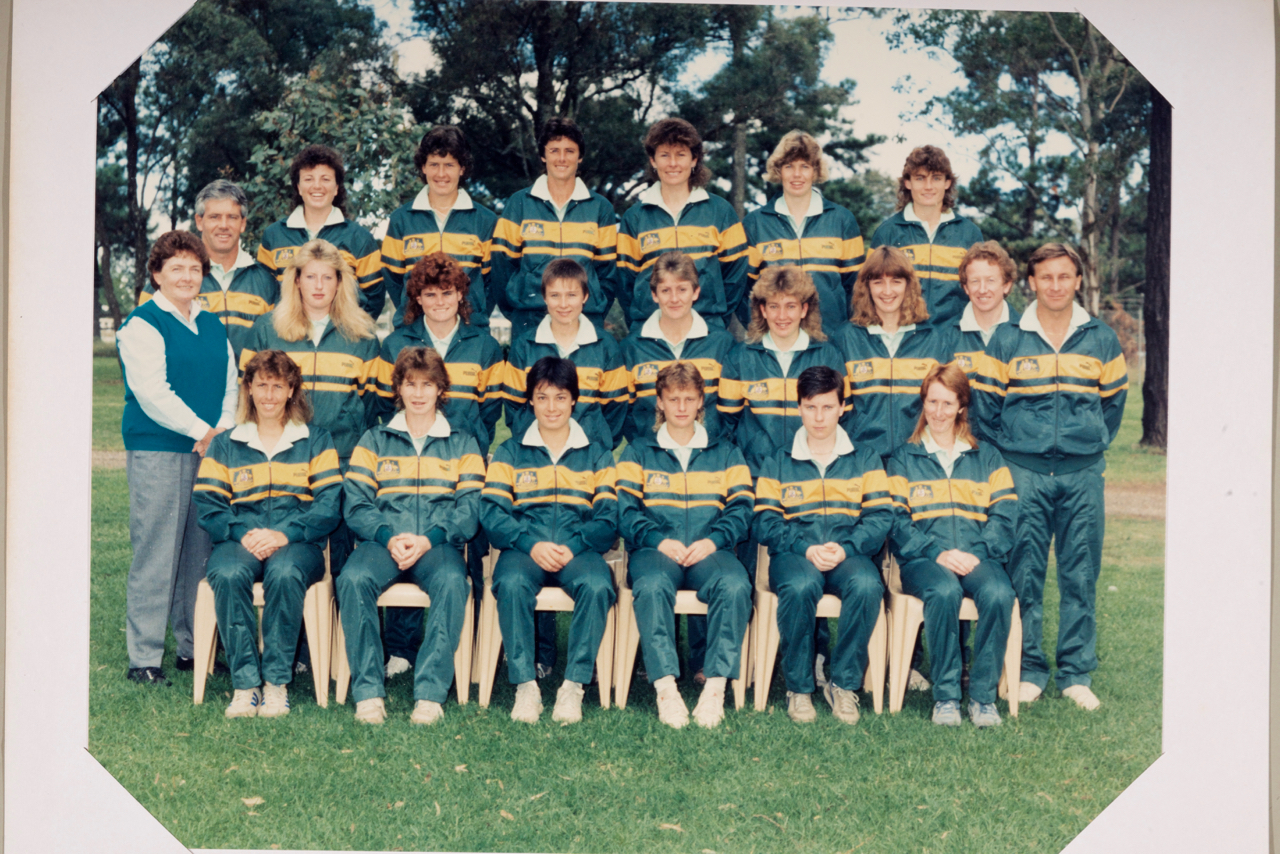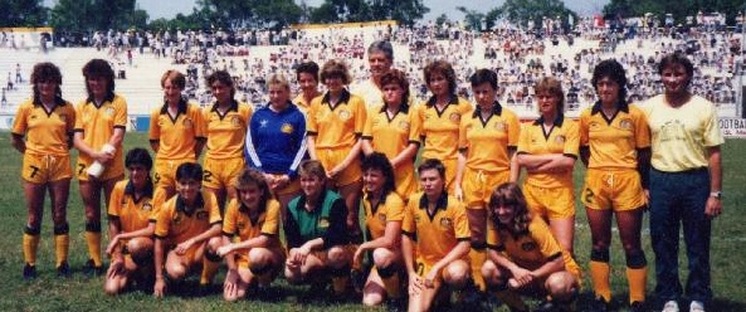The legacy of Australia’s pioneering female footballers will be writ large on Sunday as thousands of football fans descend on Sydney Harbour Bridge marking a watershed moment for the women’s game in Australia.
The celebration of football, culture and community invites everyone to walk, jog or dance across the bridge to the , just 25 days before kick off in the FIFA Women’s World Cup 2023™.
In a significant coincidence, this month also marks exactly 35 years since Australian women had their first taste of a World Cup experience.
If this Unity Celebration in June 2023, is a celebration of how far the sport has come along Australia’s World Cup history time-line, the June of 1988 is surely where it all began, in FIFA’s test event.
The 1988 FIFA Women’s Invitational Tournament was earmarked as a ‘pilot’ Women’s World Cup with FIFA to then decide if the women’s game warranted the same showcase event as their male counterparts.
Matilda cap #26 Renaye Iserief recalls that before that time, a World Cup tournament for women was something of a fantasy.
“There was no talk back then of World Cups or really being on the world stage, even though we were travelling to tournaments internationally. So when the ‘pilot’ World Cup was announced, we realised that we were on this journey and it could really become a big thing”.
An ankle injury would cruelly rule Iserief out of the 1988 event but 35 years later, she certainly doesn’t want to miss a moment of the celebrations, the chance to recognise a legacy that she and so many others before and after, played a part in creating.
“Back then, if someone had asked me where I would like to see the game in 20-30 years, I was just hoping that women wouldn’t have to pay to play anymore, it was hard to imagine what women’s football would look like, so it’s truly incredible to see what it’s become.”

Matilda cap #55 Carol Vinson would be the first player to touch the ball at the 1988 tournament in Australia’s Group B match against Brazil in Jiangmen, which kicked off a few hours before the official opening match in Guangzhou, where hosts China would play Canada.
When Matilda cap #53 Janine Riddington superbly chipped the keeper to secure a 1-0 victory, the Aussies became not just the first to touch a ball at the tournament, but could now claim the first goal, as well as the first win.
Vinson recalls how huge this was in the context of women’s football.
“We always hoped this would be big and once we got there [to China] and saw how well organised it was, I believed this could actually happen”.
This match also marked a personal milestone for the striker.
“It was a huge deal for me, it was the first time I represented Australia, as I’d been unfortunate before due to injury. So to play for my country for the first time, in a ‘pilot world cup’ against giants of the game – and that’s on my cap, how awesome!”
The trial run was proclaimed a success with FIFA sanctioning the tournament and announcing the first edition would be hosted once more by China in 1991.

Heartbreakingly, goal difference would deny the Australian women a chance to compete at the inaugural event, pipped at the post by New Zealand in the Oceania Cup qualifying tournament.
Four years later, it was announced that the second edition would be held in Sweden and for Australia, the road to qualification was once more through the Oceania Cup, where ironically, the outcome between the two Trans-Tasman rivals would again come down to goal difference, in a tournament Head Coach Tom Sermanni recalls as enormously stressful.
“We had to go to Papua New Guinea and play New Zealand and Papua New Guinea twice each in a double round robin. I remember New Zealand being slight favourites, having qualified the previous time.”
“We had good preparation and this time had some government funding to help, but then we had our official playing strips sent from Melbourne and they never showed up.”
Sermanni put in a call to Ron Smith, then at the AIS, who sent a package with a boys strip for the team to play in, meaning the Australian women ran out in that first match wearing red shirts with a blue and white stripe.
Australia completed their tournament with a +11 goal difference, meaning New Zealand would need to beat Papua New Guinea by 11 goals in the final game to secure qualification.
The thought of attending that deciding match was too much for Sermanni, who says he stayed back at the hotel with team Physio, Ed Hollis.
“We couldn’t face watching that for 90 minutes but a group of the players went and the first we knew about the result was when they came back to the hotel and jumped in the pool to celebrate,” Sermanni said.
So Australia was set for an ‘official’ World Cup debut in Sweden 1995 and off went Sermanni to the FIFA Women’s World Cup Draw in Helsingborg, only to see his side placed in arguably the ‘Group of Death’.
“It was a nightmare, USA, China and Denmark, who were all the top 5 in the world at the time” he recalled.
While Australia would not win a match at the tournament, cap #66 Angela Iannotta would earn the honour of scoring her country’s first Women’s World Cup Finals goal (against China) and Sermanni was full of praise for the character of the Australian women, pushing the vastly more experienced teams from USA and China all the way.
“When you consider how inexperienced we were in that environment, the players did remarkably well.”
“The World Cup back then was a very different event to what it is today, we played in a small stadium with a track around it, travelled overnight by train for 12 or 13 hours to get to our last match and only had a total of 14 pieces of team gear and six staff along for the trip – a Manager, Doctor, Physio, Nutritionist, Assistant Coach and me, as well as Moya Dodd who was our Head of Administration.”
Matildas cap #42 Moya Dodd AO, would certainly have run onto the pitch in Arosvallen, Västerås for the opening match against Denmark, however an ACL injury in January 1995 dashed that dream.
While she missed the opportunity to take the field in a World Cup during her playing career, Dodd’s service to the game saw her recognised in the recent King’s Birthday Honours and this Sunday, she will join fellow Alumni on the deck of the Sydney Harbour Bridge to celebrate the next milestone in Australian women’s football.
While many felt that an event of this magnitude was perhaps a pipe dream, for Dodd, it was an inevitable part in the evolution of the game which she is confident will continue to grow.
“We always knew it could be phenomenal,” Dodd said.
“Watching women’s football grow has been like watching a movie where you know the ending. You enjoy the plot twists, but you just know that in the end the goodies will prevail.”
“During this World Cup, a lot of people will be seeing that movie for the first time. And I know they’re going to love it.”
You can follow the CommBank Matildas FIFA Women’s World Cup journey at .








